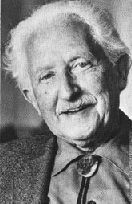Compare
and Contrast With Other Theorists
Erikson recognized the
Freudian theory, but he did not grasp its entirety. He simply agreed with
just some of the basic notions and claimed that Sigmund Freud had overlooked
some of the important dimensions of the human development. Freud had the
tendency to focus more on the Id, while Erikson had a tendency to focus more
on the Ego. Freud stated that our personality is shaped by the time that we
reach the age of five and when it came to the essential point of what
motivates human behavior; Freud believed that it was due to biological
instincts of both life and aggression. Erikson elaborated Freudís Genital
stage into Adolescence, and added three stages of adulthood. Erikson also
took it a bit further than Freud did by developing eight psychological
stages that according to him we come across throughout our life span. These
stages are as follows: 1) Trust versus Mistrust, 2) Autonomy versus Shame
and Doubt, 3) Initiative versus Guilt, 4) Industry versus Inferiority, 5)
Identity versus Role Confusion, 6) Intimacy versus Isolation, 7)
Generativity versus Stagnation, and 8) Integrity versus Despair. Erikson
also believed that the most imperative force that drives both human behavior
and the development of personality was actually social interaction. Many
believe that Erikson felt this way because he lacked the knowledge of being
trained in both the science of biology and medical sciences as well,
contrasting with Freud and many of his contemporaries that he was working
with at the time.
Bingham and
Stryker (1995) implied that the development of identity, intimacy, and
generativity might receive diverse emphases during adulthood for both women
and for men. They then formed the Five Stages of Socioemotional Development
of girls that are comparable with some of the stages already developed by
Erikson, and they are as follows: 1) Developing the Hardy Personality, 2)
Forming a Identity, 3) Skill Building for Self-Esteem, 4) Strategies for
Self-Sufficiency, and 5) Satisfaction in Work and Love. A key distinction
between Bingham and Stryker and the work of Erikson is that the models take
place in the stage of premature adulthood. In the Bingham and Stryker model,
the predicament is emotional and financial self-sufficiency. As for the
Erikson model, the predicament lies around intimacy versus isolation.
Additionally, another way that the two models are different deals with the
predicament of adulthood. For Bingham and Stryker, the predicament lies
around the satisfaction one has with life when it comes to both
relationships and the work environment. For Erikson, the predicament lies
around the concern of both ego identity and generativity. The importance of
the development of the self or identity as an innovative human being is
alike nonetheless in both the Bingham and Stryker model and the Erikson
model as well.



